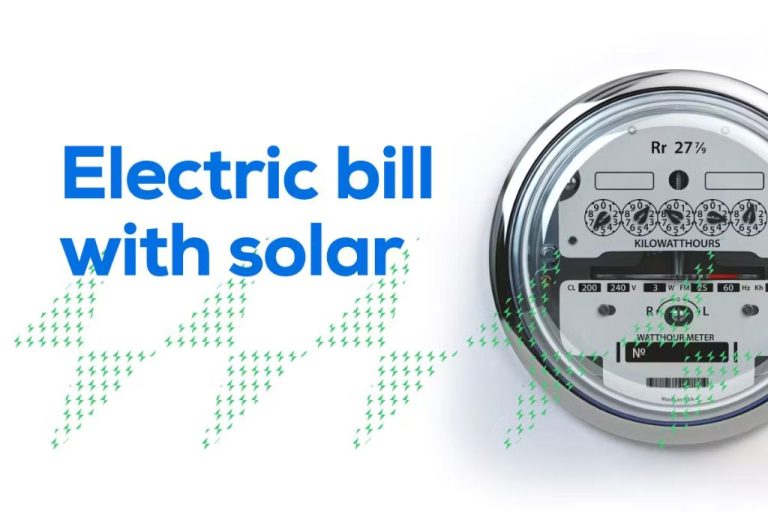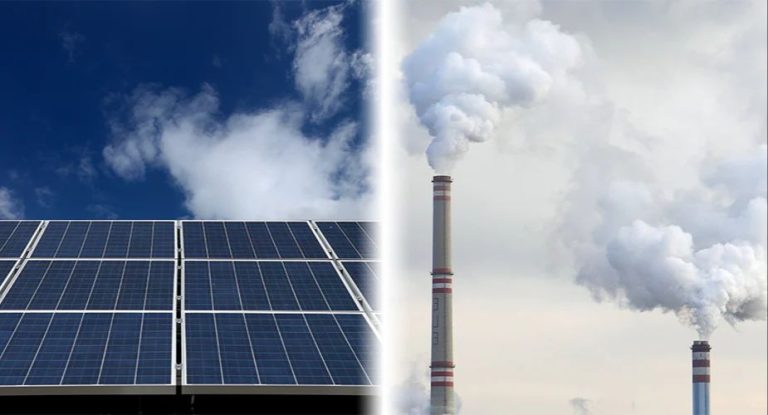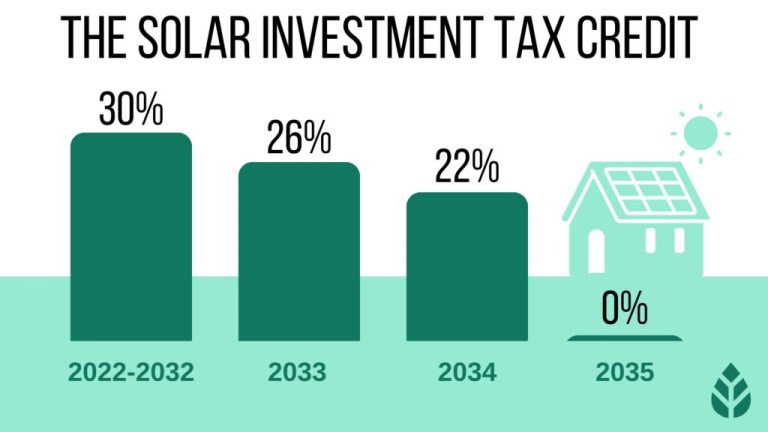Is Nuclear Energy Is A Renewable Energy?
Nuclear energy is energy produced through nuclear fission, in which atoms of nuclear fuel such as uranium or plutonium are split to release huge amounts of heat energy. This heat is used to generate electricity. Nuclear power plants currently provide about 10% of the world’s electricity.
There is debate around whether nuclear energy should be classified as renewable energy or not. While nuclear fission relies on fuel sources that are finite in supply, proponents argue that nuclear energy is clean, reliable, and efficient. Critics counter that nuclear waste poses storage and security risks, and fuel sources will eventually be depleted, making nuclear unsustainable long-term.
This article will examine the arguments on both sides of this debate and look at factors such as uranium reserves, safety, costs, and waste management to evaluate whether nuclear energy can be considered a renewable energy source.
Definition of Renewable Energy
Renewable energy comes from sources that nature replenishes within a relatively short timeframe https://www.un.org/en/climatechange/what-is-renewable-energy. The renewal timescales must be rapid enough to sustain the energy flow especially when compared to the rate at which the same resource is being depleted. Renewable sources include solar, wind, geothermal, hydropower and biomass.
According to the Natural Resources Defense Council, renewable energy comes from natural sources or processes that are constantly replenished https://www.nrdc.org/stories/renewable-energy-clean-facts. The key aspect is that renewable energy sources are naturally replenished within a human, rather than a geological, timeframe. This allows for sustained energy generation as long as the demand does not exceed the natural rate of replenishment.
The U.S. Department of Energy states that renewable energy is produced from sources that are naturally replenished and do not run out or get used up https://www.energy.gov/eere/renewable-energy. This means renewable energy relies on fuels derived from resources that are naturally restored within a period of time that matches human demand.
Nuclear Fission Process
Nuclear fission is the process by which a heavy atomic nucleus splits into two or more lighter nuclei. This process releases a large amount of energy in the form of heat and radiation. Fission occurs when a neutron collides with a fissile atom like uranium-235 (U.S. Energy Information Administration).
The fission process begins when a neutron strikes the nucleus of a U-235 atom, causing it to become unstable. The nucleus then splits into two smaller nuclei, called fission fragments, and releases two or three additional neutrons plus a large amount of energy (MIT Nuclear Reactor Laboratory).
The neutrons released can strike other uranium nuclei, creating a chain reaction where more and more nuclei split. Each fission releases additional neutrons that can split other nuclei, exponentially increasing the amount of energy produced. The energy released in the form of heat can be used to boil water into steam that spins a turbine to generate electricity.
Uranium Availability
Uranium is a relatively abundant metal, found in the Earth’s crust at concentrations of 2-4 parts per million, similar to other more common metals such as tin and tungsten. According to the World Nuclear Association, the world’s present known uranium resources can meet over 100 years of supply at today’s consumption rate [1]. Identified resources recoverable at a cost of less than $130/kg contain over 5.7 million metric tons of uranium. Undiscovered resources are expected to be considerably larger.
The majority of currently known uranium reserves are found in Australia, Kazakhstan, and Canada. The United States has significant domestic reserves, estimated at over 200,000 tons according to the Energy Information Administration [2]. Annual uranium consumption by nuclear reactors worldwide is around 68,000 tons. At this rate, existing uranium reserves could power nuclear generation at today’s capacity for over 80 years.
Additionally, breeder reactors and reprocessing of spent fuel could extend uranium supplies essentially indefinitely. With breeder technology, plutonium produced from uranium-238 can fuel the fission process, enabling 70x more energy production from the same amount of natural uranium. Thus, the uranium that exists on Earth is enough for thousands to millions of years of nuclear energy, making it essentially inexhaustible compared to humanity’s timescale.
Breeder Reactors
Breeder reactors are designed to extend the supply of nuclear fuel by producing more fissile material than they consume. Breeder reactors achieve this by converting “fertile” isotopes such as uranium-238 or thorium-232 into fissile isotopes like plutonium-239 or uranium-233 through neutron bombardment [1]. The fissile isotopes produced can be used as nuclear fuel, allowing more energy to be extracted compared to just using natural uranium.
This breeding process allows breeder reactors to generate up to 60 times more energy from the same amount of natural uranium compared to conventional light-water reactors [2]. Some experts estimate that there is enough uranium-238 in the earth’s crust to power breeder reactors for billions of years using today’s nuclear technology and at current energy consumption rates [3]. This vast increase in usable fuel can substantially extend the energy potential of known uranium reserves.
Nuclear Waste Concerns
Nuclear energy produces radioactive waste that must be carefully managed. The most hazardous waste is the used nuclear fuel removed from reactors after several years of use. This high-level radioactive waste accounts for over 95% of the radioactivity from the nuclear fuel cycle, while making up only 3% of the volume of total nuclear waste generated (The Boring Truth About Nuclear Waste).
Used nuclear fuel is thermally hot as well as highly radioactive and requires remote handling and shielding. Most used fuel is currently stored on-site at nuclear plants, but longer term disposal solutions are required. Placing used fuel in deep underground repositories is seen as the reference solution internationally. Finland is building the first permanent repository to begin operation in the mid-2020s (Nuclear power and the environment – U.S. Energy Information Administration).
While the risks of radioactive exposure from nuclear waste should not be underestimated, modern safety practices for managing, transporting, and storing nuclear waste have proven effective at containing radiation. Of the quantifiable risks from nuclear energy, waste-related risks are much lower than the operational risks from radiation exposure or nuclear accidents (Radioactive Wastes – Myths and Realities). Still, the long-term risks posed by buried nuclear waste over centuries are subject to continued debate.
Safety and Accidents
The safety of nuclear power plants has been a major concern, especially after high-profile accidents like Chernobyl in 1986 and Fukushima in 2011. These accidents released large amounts of radiation into the environment and caused severe health effects for nearby populations.
According to the Union of Concerned Scientists, there have been over 100 nuclear accidents worldwide since the 1950s [1]. Some of the most severe include the Kyshtym disaster in 1957, the Three Mile Island accident in 1979, and the Goiânia accident in 1987.
However, improvements in safety systems and procedures have helped reduce the risks and consequences of nuclear accidents over the past few decades. New reactor designs incorporate passive safety features that can shut down the reactor automatically in an emergency. And strengthened regulatory oversight aims to prevent operational errors and equipment failures.
While risks can never be eliminated completely, the nuclear industry argues that reactor accidents are unlikely with current safeguards. Supporters believe the advantages of nuclear power outweigh its potential drawbacks.
[1] https://www.ucsusa.org/resources/brief-history-nuclear-accidents-worldwide
Costs
The costs of nuclear energy compared to other energy sources is an important consideration in the debate over whether nuclear should be considered renewable. According to the World Nuclear Association, nuclear energy has relatively low fuel costs compared to coal and gas-fired plants, giving it a cost advantage. However, the capital costs of building nuclear plants are greater than coal plants and much greater than gas plants (World Nuclear Association).
In terms of levelized costs, which averages total costs over the lifespan of the plant, existing nuclear plants have comparable costs to coal and gas plants. A 2021 analysis found average levelized costs of $41/MWh for existing coal plants, $36/MWh for gas, and $33/MWh for existing nuclear plants (Mackinac Center for Public Policy). However, building new nuclear plants is significantly more expensive than building other types of plants.
So while operating costs of existing nuclear plants are on par with fossil fuels, the high upfront capital costs can make nuclear less economically competitive. This is an important factor in whether nuclear should be considered a viable renewable energy source.
Renewable Classification Debate
There is an ongoing debate about whether nuclear energy should be classified as a renewable energy source. Proponents argue that nuclear is a clean energy source that emits zero greenhouse gases and helps combat climate change. Uranium, the fuel used in nuclear fission, is considered abundant enough to power nuclear reactors for centuries, especially with the possibility of breeder reactors that can create more fuel than they consume. Therefore, some view nuclear as an indefinitely sustainable energy source like solar or wind.
However, opponents argue that uranium is a finite resource that will eventually be depleted, even with breeder reactor technology. Nuclear reactors also create radioactive waste that must be safely stored for thousands of years. For these reasons, many environmental groups and policymakers do not consider nuclear to be renewable in the same way as solar, wind, hydropower and geothermal energy. There are also concerns about the high costs and safety risks associated with nuclear power.
Overall, whether or not nuclear energy is classified as renewable remains a complex debate. There are reasonable arguments on both sides. Nuclear differs from traditional renewable sources in its waste production and resource scarcity, but it offers reliable low-carbon energy. Policymakers must weigh these factors when shaping long-term energy plans.
Sources:
[1] https://www.orano.group/en/unpacking-nuclear/is-nuclear-power-a-renewable-energy
[2] https://www.energy.gov/ne/articles/3-reasons-why-nuclear-clean-and-sustainable
Conclusion
In summary, there are valid arguments on both sides of the debate about whether nuclear energy should be classified as renewable or not. Those who argue nuclear is renewable point to breeder reactor technology and the enormous supply of uranium in the earth’s crust as evidence that nuclear fuel is sustainable in the long-term. However, critics argue that because today’s nuclear plants rely on uranium-235, which makes up only 0.7% of natural uranium, there are limits to the supply from mining uranium ore.
Additionally, while next generation breeder reactors could theoretically extend the uranium supply by utilizing U-238 through breeding Pu-239, this technology is still in development and not yet commercially viable. Waste management and safety concerns also lead some to question if nuclear is truly “clean and green” like other renewables. Ultimately, there are good-faith points on both sides of the issue. Classifying nuclear energy as renewable or not renewable largely depends on whether one takes a short-term or very long-term view of uranium supplies and weighs various pros and cons. More consensus may emerge in the future as new reactor technologies develop and waste management improves.





